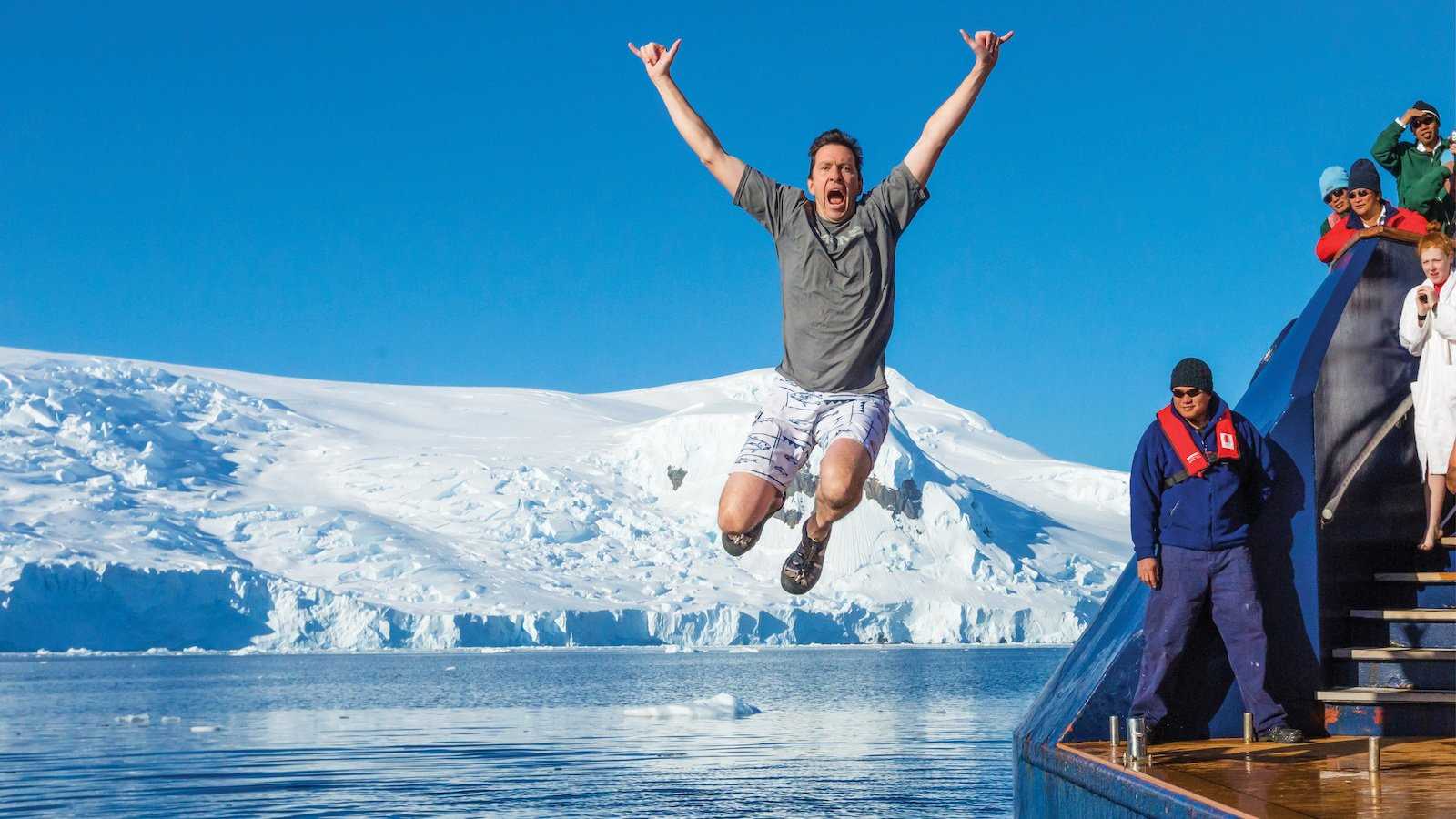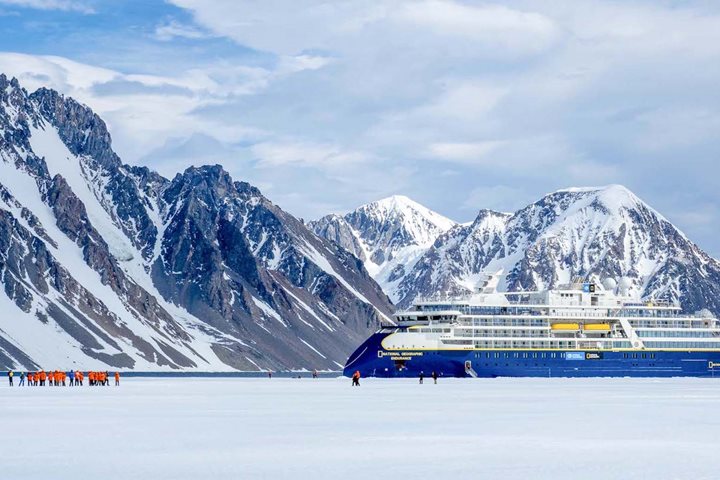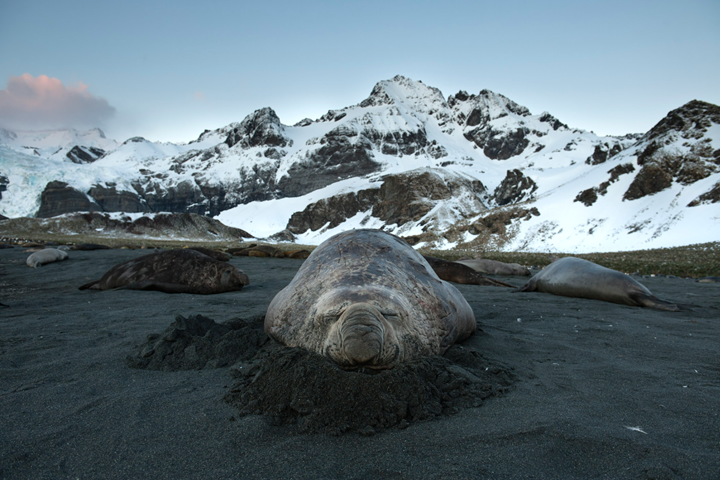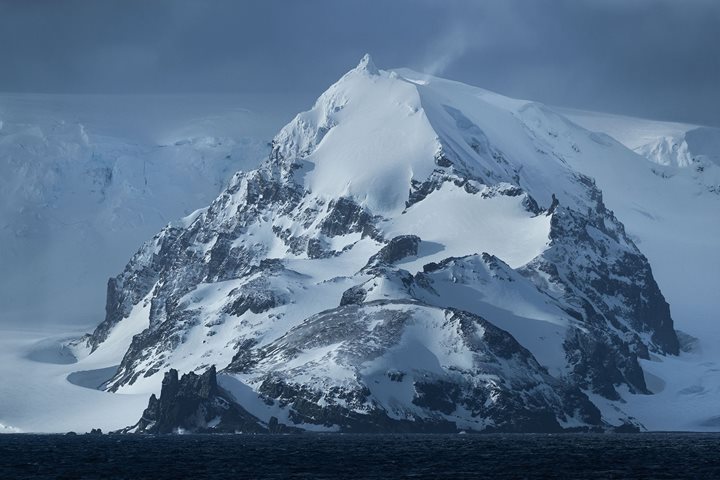As a northerner and enthusiast of cold water, naturalist Adrienne Bosworth may be a biased source, but she thinks that "vaulting into the frigid ocean is one of the biggest favors you can do your body and the surest way to turn around a gloomy disposition!" As she shares, "the hardest part is the anticipation, the easiest part is getting out, and the part worth focusing on is the unparalleled rush of warmth and vigor that floods your body in the moments after you emerge." Here, Bosworth answers top questions about this highly anticipated event aboard our ships so you can be prepared before you take the plunge.
Get Inspired by Photos, Videos, Webinars, Stories, and Exclusive Offers.
Sign Up
How cold is the water on a polar plunge?
The temperature of the waters that we plunge into on Lindblad Expeditions-National Geographic voyages varies quite a bit depending on location and season, but a safe bet is that the water is going to be between 35-45 degrees Fahrenheit (approximately 2-8 degrees Celsius). For dramatic effect, we do try to stage the polar plunge somewhere near a photogenic chunk of ice. In Antarctica, with ample bergs of all sizes creating a frosty gauntlet, we have many options. Cruising regions like Alaska or Greenland we often have to work a little harder to set the scene, strategically scheduling our swim call for days when we expect to be cozy with glaciers. There are also some places we jump that have no ice at all—such as the Arctic Circle in Iceland; but these jumps are just as bracing.
How long do you stay in the water on a polar plunge?
It takes a very particular disposition to remain in near-freezing water for any duration. For the vast majority of people, autopilot takes over the moment their toes breach the waterline, propelling them immediately and with inhuman speed out of the ocean and into the waiting arms of a helpful staff member. From the jump to the climb out, people spend about 10 seconds in the water. Often, it’s only later, comfortably seated in the lounge with a neat glass of bourbon, that they really come to their senses.
What can you expect during a polar plunge with Lindblad Expeditions? Tell us about the process.
Each ship in the Lindblad-National Geographic fleet has a tailor-made system for launching and loading Zodiacs, and this makes the plunging process slightly different for each vessel. Just like with any of our expedition activities, there are ample instructions given over the ship’s speakers. Once the plunge is announced (it's usually a surprise when it's going to happen) one of the expedition staff calls jumpers to gather near the ship's mudroom or fantail and specifies a separate location for bemused friends and family to spectate. This gives onlookers a better vantage and helps to quell any chaos at the plunge muster location.
With the entire field staff team cheering them on, polar plungers make their way one by one onto a Zodiac. When cued by the plunge coordinator, each valiant soul flings themselves off the rubbery pontoon of the boat. Of course, a good exit strategy is essential: depending on the ship, jumpers will either climb two or three steps up a swim ladder to victory or scramble onto the hospitable deck of a low metal platform, purpose-built for launching kayaks and retrieving swimmers. Without fail, a staff member awaits back on board with fresh towels, hot cocoa, and sometimes a restorative shot of vodka for those who would like.
Are there age restrictions or any other types of limits to doing a polar plunge?
Most people are apt judges of their own capacity and interest level when faced with jumping into freezing water in front of a rapt crowd. While there are no formal guidelines surrounding who should or shouldn’t jump, we suggest you check in with the shipboard doctor if you have any baseline health concerns. I have seen spry swimmers in their eighties shrieking with delight as they do their best cannonball, as well as young children bobbing along merrily with the help of a lifejacket. Although being a confident swimmer is helpful, the field staff can usually find a creative and safe way to get even timid paddlers into and out of the ocean.









